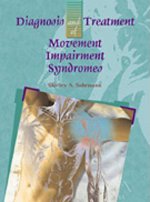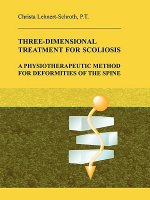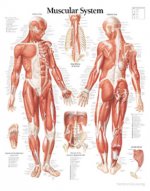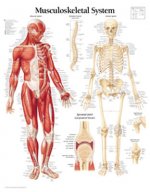
Kód: 04839054
Enteric Nervous System
Autor Jackie D. Wood
Minute-to-minute behavior of the alimentary tract reflects the integrated functioning of the gut's musculature, secretory glands and blood-lymphatic vasculature. Activity of the three effector systems to generate functionally effe ... celý popis
- Jazyk:
 Angličtina
Angličtina - Vazba: Brožovaná
- Počet stran: 172
Nakladatelství: Morgan & Claypool Publishers, 2010
- Více informací o knize

Mohlo by se vám také líbit
-

Think Read React Plan For Writing 6E
5077 Kč -

Texas Women
1159 Kč -

Atmospheric Science
1773 Kč -

Sewage and Industrial Effluent Treatment 2e
4064 Kč -

Against Perfectionism
1550 Kč -

Regulation of Sport in the European Union
3133 Kč -

Little Book of Judas
478 Kč
Dárkový poukaz: Radost zaručena
- Darujte poukaz v libovolné hodnotě a my se postaráme o zbytek.
- Poukaz se vztahuje na celou naši nabídku.
- Elektronický poukaz vytisknete z e-mailu a můžete ihned darovat.
- Platnost poukazu je 12 měsíců od data vystavení.
Více informací o knize Enteric Nervous System
Nákupem získáte 155 bodů
 Anotace knihy
Anotace knihy
Minute-to-minute behavior of the alimentary tract reflects the integrated functioning of the gut's musculature, secretory glands and blood-lymphatic vasculature. Activity of the three effector systems to generate functionally effective patterns of behavior, which are adaptive for differing digestive states, is organized and coordinated by the enteric nervous system (i.e., the brain-in-the-gut). The heuristic model for the enteric nervous system (ENS) is the same as for all integrative nervous systems, whether in vertebrate or invertebrate animals. Like other integrative nervous systems, such as the spinal cord and brain stem, the ENS functions with sensory neurons, interneurons and motor neurons. That the gut does not work without the ENS can be made as an absolute statement. This is apparent in its absence in terminal regions of the large intestine in Hirschsprung's disease in humans and animals where it is reflected by dysfunctional motility, failure of defecation and proximal fecal compaction within a proximal megacolon. Autoimmune ablation of the ENS in the lower esophageal sphincter underlies the pathophysiology of achalasia. Furthermore, neuropathic degeneration of ENS neurons in irritable bowel syndrome, other functional gastrointestinal disorders, intestinal pseudoobstruction, Chagas disease, paraneoplastic syndrome and enteric ganglionitis, underlies the morbidity associated with these disorders. The impact of these clinical disorders on quality of life and cost of health care is a reminder of the importance of the ENS for a normally functioning gut. Moreover, our incomplete understanding of the pathobiology of these disorders highlights a need for research directed to expansion of current knowledge of the neurobiology of the ENS at all levels of organization from the cellular biology of individual neurons to the biophysics of integrated networks to whole organ behavior. Investigation of the normal and disordered ENS and its interactions with the central nervous system is a branch of neurogastroenterology. Neurogastroenterology is a scientific and clinical subspecialty of gastroenterology that deals with the neural mechanisms that influence function of the digestive tract and that underlie projection of conscious sensations to the gut. Table of Contents: Introduction / Historical Perspective / Heuistic Model / Microanatomy / Sensory Neurophysiology / Interneurons / Enteric Motor Neurons / Disinhibitory Motor Disorders / Neuronal Electrical Behavior / Synaptic Transmission / Organ Level Integration / Gastric Motor Integration / Integrated Control of the Small and Large Intestines / Plasticity in the ENS / Small Intestine Motility / Defecation / References
 Parametry knihy
Parametry knihy
Zařazení knihy Knihy v angličtině Medicine Pre-clinical medicine: basic sciences Physiology
1552 Kč
- Plný název: Enteric Nervous System
- Podnázev: The Brain-in-the-Gut
- Autor: Jackie D. Wood
- Jazyk:
 Angličtina
Angličtina - Vazba: Brožovaná
- Počet stran: 172
- EAN: 9781615043392
- ISBN: 161504339X
- ID: 04839054
- Nakladatelství: Morgan & Claypool Publishers
- Hmotnost: 306 g
- Rozměry: 235 × 191 × 9 mm
- Datum vydání: 30. December 2010
Oblíbené z jiného soudku
-

Guyton and Hall Textbook of Medical Physiology
3045 Kč -

Why Do I Still Have Thyroid Symptoms? When My Lab Tests Are Normal
487 Kč -

Ganong's Review of Medical Physiology, Twenty-Fifth Edition
945 Kč -

Costanzo Physiology
1476 Kč -

Swimming Anatomy
676 Kč -

Holistic Anatomy
431 Kč -

Dance Anatomy
669 Kč -

Delavier's Core Training Anatomy
608 Kč -

Diagnosis and Treatment of Movement Impairment Syndromes
2104 Kč -

Strength Training Anatomy Workout
711 Kč -

Netter's Essential Physiology
1597 Kč -

Neurogastronomy
440 Kč -

Three-Dimensional Treatment for Scoliosis
1809 Kč -

Hand and Wrist Anatomy and Biomechanics
1970 Kč -

Biomechanics of Spine Stabilization
4361 Kč -

Anatomy of Movement
1336 Kč -

Human Physiology: An Integrated Approach, Global Edition
2138 Kč -

Handbook of CTG Interpretation
1505 Kč -

Physics, Pharmacology and Physiology for Anaesthetists
1651 Kč -

Physiology
1295 Kč -

Kinesiology of the Musculoskeletal System
3096 Kč -

Medical Physiology
2945 Kč -

Boron & Boulpaep Concise Medical Physiology
2791 Kč -

Ganong's Review of Medical Physiology, Twenty Sixth Edition
2379 Kč -

Biochemistry for Sport and Exercise Metabolism
1863 Kč -

Muscular System with Male Figure Paper Poster
251 Kč -

Oxford IB Diploma Programme: Sports, Exercise and Health Science Course Companion
2241 Kč -

Esoteric Anatomy
646 Kč -

Cardiovascular Pathology
6555 Kč -

ACSM's Guidelines for Exercise Testing and Prescription
1251 Kč -

Earthing (2nd Edition)
738 Kč -

Guyton & Hall Physiology Review
1099 Kč -

Music of Life
276 Kč -

Nutrition Management of Inherited Metabolic Diseases
3648 Kč -

Sirtuins
4011 Kč -

Musculoskeletal System Laminated Poster
362 Kč -

Ross & Wilson Pocket Reference Guide to Anatomy and Physiology
779 Kč -

Funktionelle Anatomie der Gelenke
3676 Kč -

Nobel Lectures In Physiology Or Medicine (2006-2010)
1189 Kč -

Diabetes Secrets
992 Kč -

Essentials of Strength Training and Conditioning
3757 Kč -

Netter's Physiology Flash Cards
932 Kč -

Physiology Coloring Book, The
681 Kč -

Anatomy of Voice
882 Kč -

Running
1594 Kč -

Energetic Kinesiology
1897 Kč -

Marks' Basic Medical Biochemistry
1496 Kč -

Thinking Body
548 Kč -

Color Atlas of Pathophysiology
1116 Kč
Osobní odběr Praha, Brno a 12903 dalších
Copyright ©2008-24 nejlevnejsi-knihy.cz Všechna práva vyhrazenaSoukromíCookies



 Vrácení do měsíce
Vrácení do měsíce 571 999 099 (8-15.30h)
571 999 099 (8-15.30h)